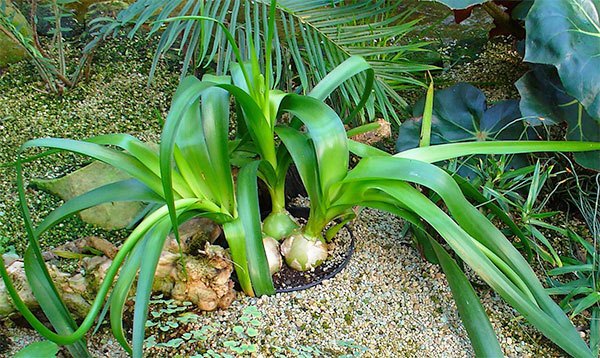The scientific name of the plant sounds like the Poultry Tail, it is popularly known as the Bethlehem Star, the Chinese onion, the Indian onion, and even Mongolian, even though South Africa is its birthplace. Unfortunately, the scientific biological studies of this plant are not popular, and therefore it has not been studied sufficiently. But, known information about it testifies to the healing propertiesused in traditional medicine.
Table of contents
Description of Chinese onions, medicinal properties
Cultivation of Chinese onions does not require special conditions, the plant is not capricious. True, it is desirable to add sun-like sand to the soil with humus. You can grow in a flower pot, or just in the garden. Reproduction is carried out by vegetative means. It blooms all year round, and the flowering period usually begins 2-3 years after planting.
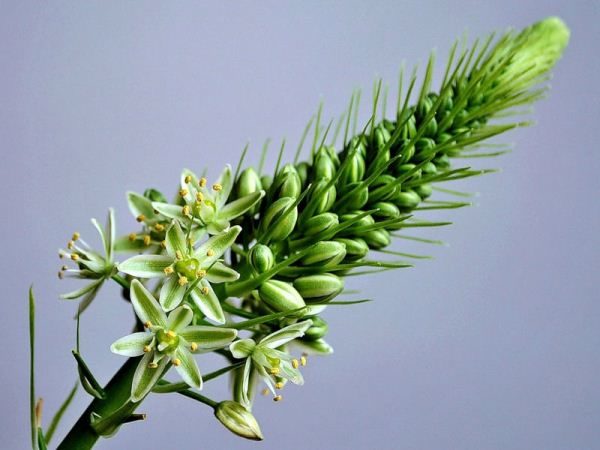
Poultry bird is a small (about 10 centimeters in diameter) bulb, which looks out of the ground, long green leaves growing from it and a white peduncle. Peduncle reaches to 50 centimeters long and all covered with small white flowers, like stars.
The chemical composition of the star of Bethlehem is not fully understood. The established fact is the content of phytoncides, which are similar in properties to garlic. A high concentration of this substance when exposed to the skin can even cause burns.. Chinese onions are widely used for external use according to traditional medicine recipes, but in traditional medicine there is almost no mention of it. With it, you can get rid of headaches, pain from mechanical injuries of the extremities, herpes infection on the lips, fungal skin diseases, as well as improve the condition of arthritis and osteochondrosis. And many other diseases of the musculoskeletal system.
Despite the huge amount of healing properties, Chinese onions are poisonous. Its composition includes glycosides, which are dangerous to the human cardiovascular system. Its use inside is strictly prohibited.. In exceptional cases, it is possible to add a few drops of a plant to a glass of water. Patients with hemophilia, its use is contraindicated! Exterior application is carried out carefully to avoid burns, as well as possible allergies to the plant itself. Onions also pose a health hazard in case of contact with the mucous membranes, in case of contact with eyes, rinse with plenty of running water.
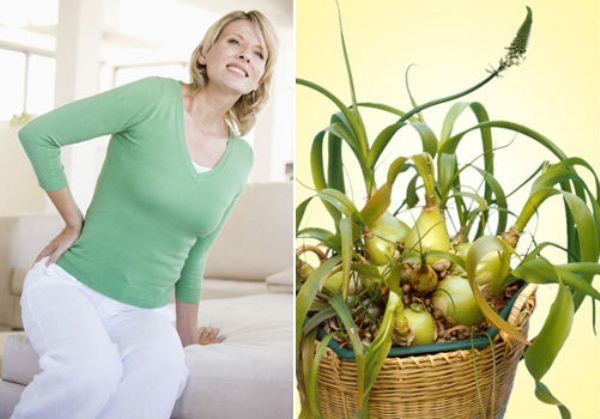
It is worth taking into account that some people have individual intolerance of this plant, which is a contraindication to the use of tinctures and ointments from it, therefore, you must first determine whether you belong to such people.
Features of growing and care at home
Growing Indian onions is also possible at home. This will require only a plastic or clay pot and the opportunity to put it on the windowsill, where there is good lighting (the north or north-east side is not the best option). It is recommended to use all the same clay pot. This is due not only to its more solid look. These pots have the ability to get rid of excessive moisture, which is very important. Also, it has the ability to clean the soil from harmful deposits in the form of salts.
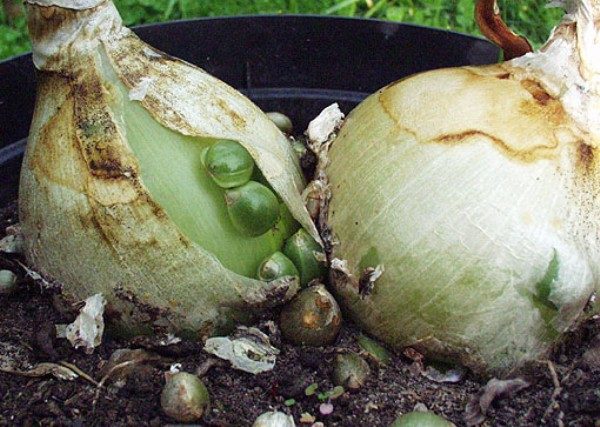
Additional fertilizer of the root system or feeding is not required. Proper planting is carried out by deepening the bulb in the ground by half. Transplantation should be done no more than once every few years.. The most favorable for these manipulations is autumn.
If planting is carried out in open ground, the conditions remain the same, but it is recommended to feed it. The most used is mullein, it is used 1-2 times a month. In summer, watering is best done frequently, so that the soil does not dry out.
Chinese onion is a heat-loving plant, and therefore it should be properly insulated for the winter period or taken to a room for overexposure. Thermal insulation is recommended, as transplanting can damage the root system.. For reproduction use several options: sowing seeds, separation of children, division of the bulb.
Use in traditional medicine
The expediency of use in traditional medicine was justified in such diseases as bronchitis, migraine, sciatica, hematomas, sprains and in many other cases. Poultry gum is used in the form of tincture, fresh juice or ointment.
The juice
Juice can be obtained from drying out tips, by cutting into their fleshy parts at the base. It is used very simply: smeared the place that is disturbing, and then put on a warming bandage. You should not worry about a slight burning sensation during the first 10 minutes; the plant acts on the skin in this way. The effectiveness of the juice is also high in the healing of animal bites.
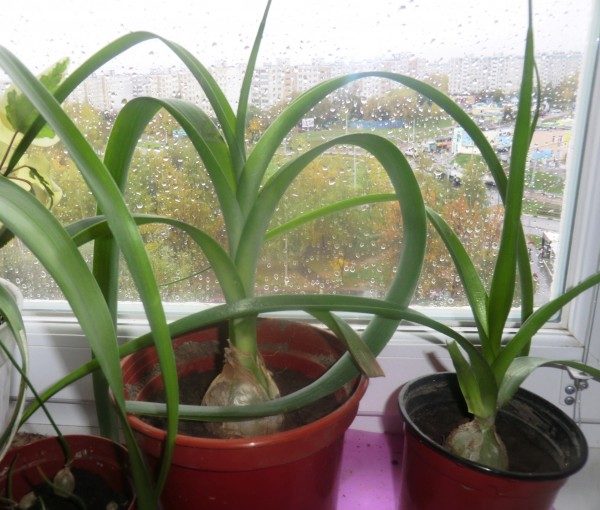
Finely chopped leaf, which allocates juice, can be applied as a compress to the chest in case of colds. Keep such a compress should be no more 3 minutes. This gruel can also be used for frostbite.
Tincture

Chinese onion tincture is used to grind joints. Its preparation is very simple and does not require much effort. It is necessary to pour vodka onions, stalks and leaves in proportion 1 to 20. If vodka is replaced with boiling water and the concentration is increased to 1 to 10, then the resulting lotion can be used to remove freckles.
Indian onion is a useful in-house plant that will allow its owner to cope with many adverse effects on the body in the form of bumps, bruises, bites, etc. But, like any therapeutic substance, it should be used carefully and in recommended doses.. Otherwise, it can do more harm than good.
